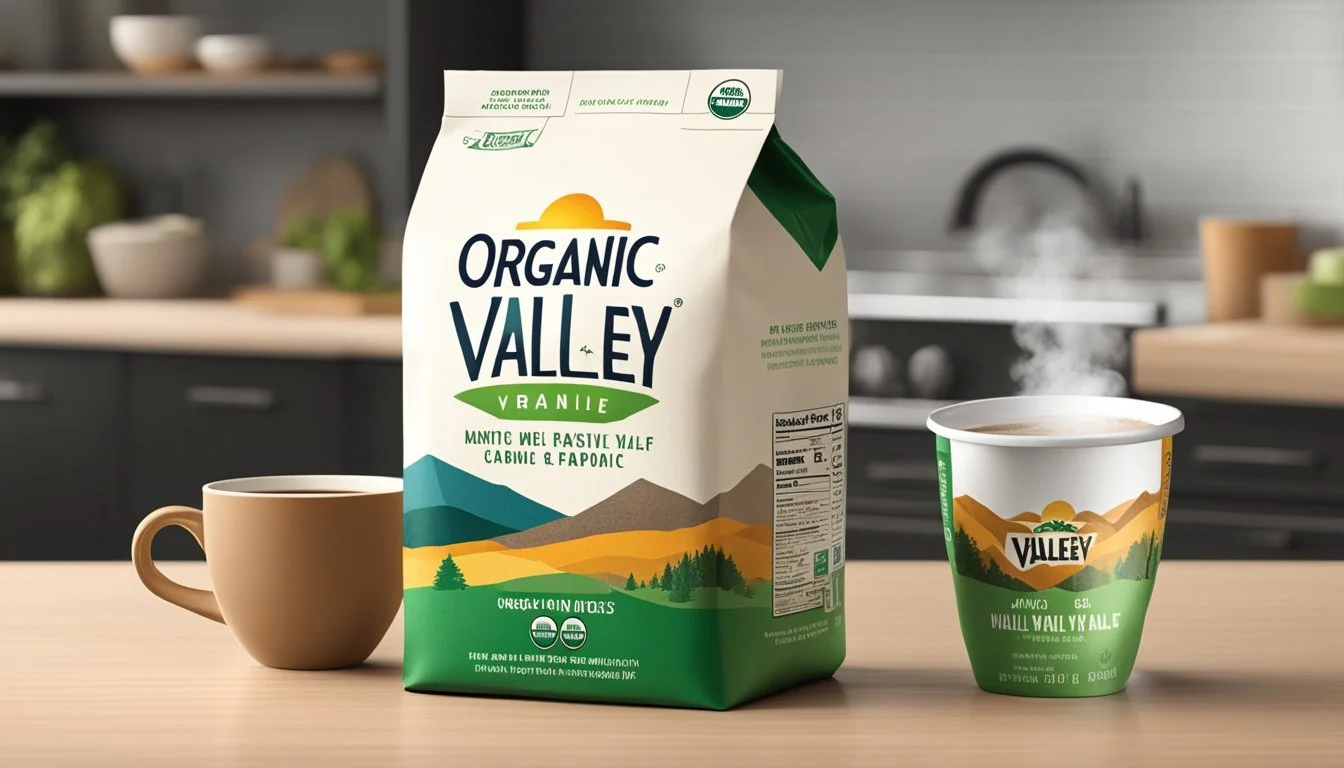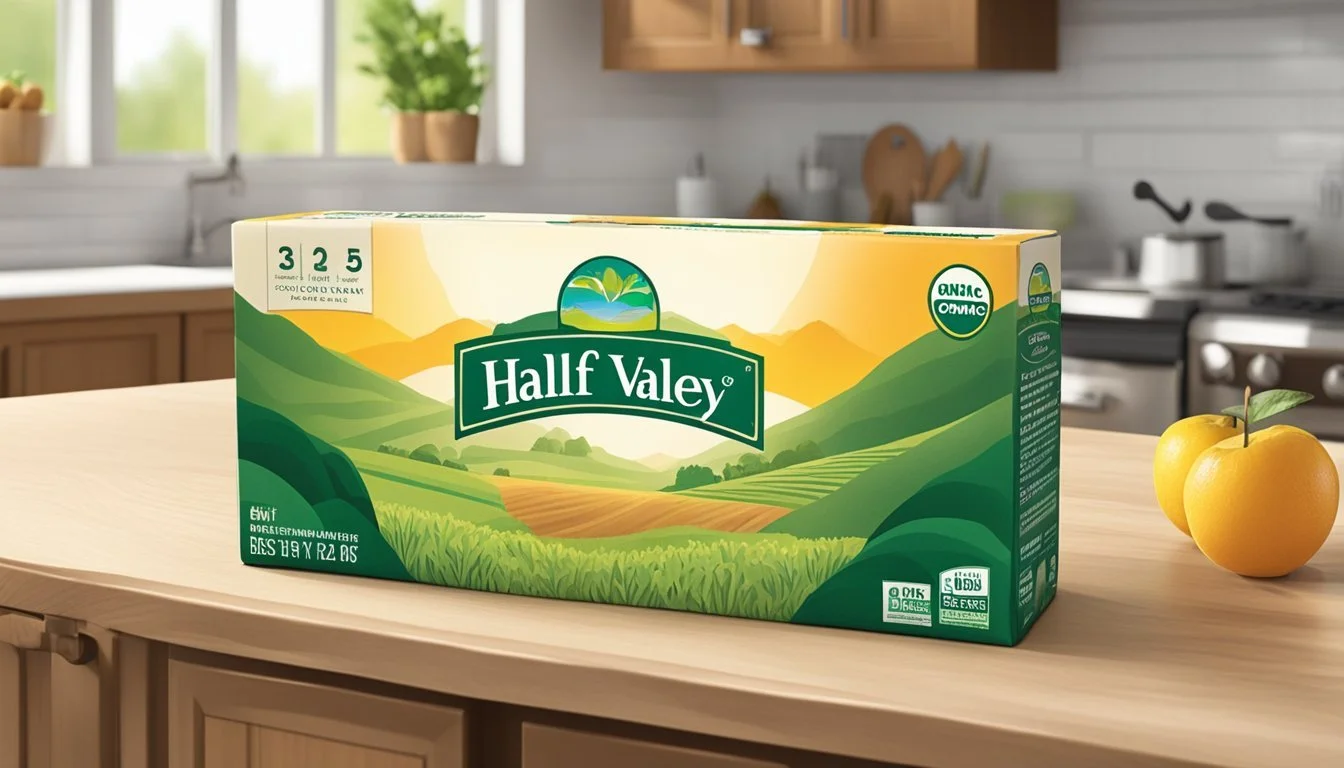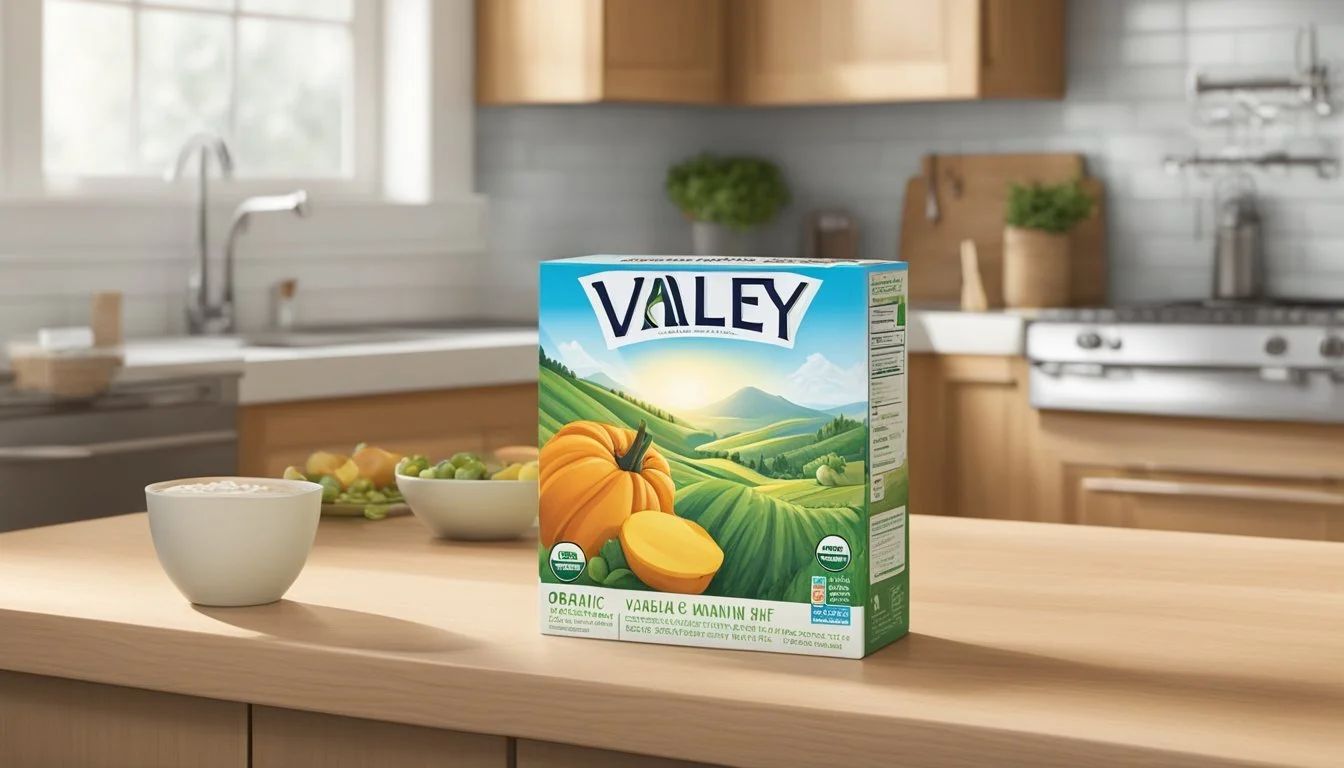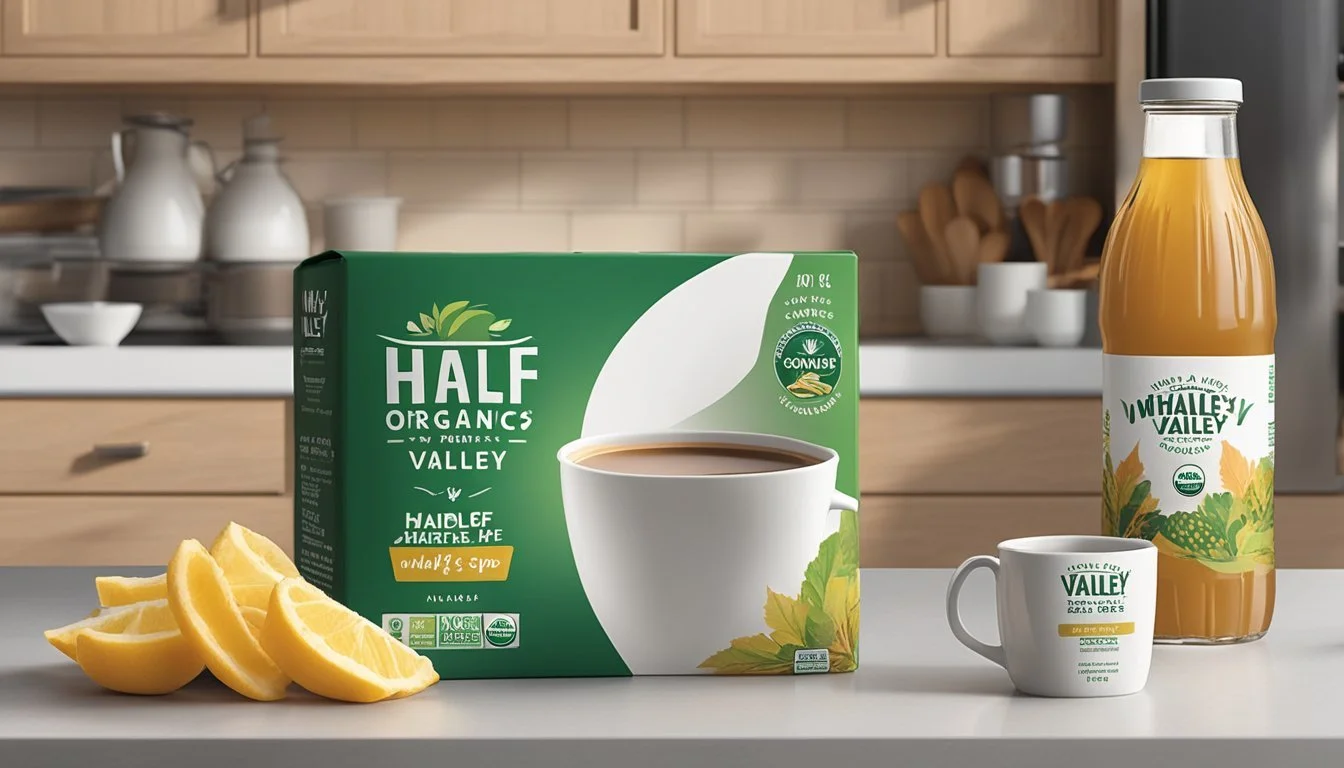How Long Does Organic Valley Half-and-Half Last?
Shelf Life and Storage Tips
Determining the shelf life of dairy products like Organic Valley Half and Half is important for those who enjoy its creamy richness in coffee or recipes. The longevity of this product in your refrigerator hinges on proper storage and understanding the difference between pasteurized and ultra-pasteurized varieties. Organic Valley Half and Half, being an organic product made with cream (how long does cream last?) and milk, typically possesses a shorter shelf life compared to non-organic counterparts due to the absence of preservatives.
Once opened, Organic Valley Half and Half should be stored in the refrigerator. An unopened carton of this half and half can last up to the expiration date printed on the package, usually several weeks from the date of purchase. However, once the seal is broken, it's generally recommended to consume it within five to seven days to ensure freshness and prevent spoilage. Proper storage in consistent refrigeration is key to maintaining its quality during this timeframe.
To extend its shelf life, some individuals may consider freezing Organic Valley Half and Half. Freezing can alter the product's texture and consistency, which might affect its performance in some culinary applications upon thawing. However, for those willing to compromise on texture for longevity, freezing provides a viable option for preserving Organic Valley Half and Half beyond its typical refrigerated lifespan.
Understanding Half-and-Half
Half-and-half is a dairy product that is essentially a blend of milk and cream, known for its role in complementing coffee and as an ingredient in culinary recipes. It strikes a balance with a fat content between whole milk and heavy cream.
Composition and Variants
Half-and-half consists of equal parts whole milk and heavy cream. The product typically contains about 10-18% milkfat, making it richer than milk but less dense than cream. Variants of half-and-half can include lactose-free and flavored versions, like French Vanilla or Hazelnut, which offer additional taste profiles for consumers.
Milk solids: present in half-and-half, contribute to its richness.
Protein: a component of the milk solids in half-and-half, crucial for its structure and mouthfeel.
Organic vs. Conventional Half-and-Half
Organic half-and-half is made from milk and cream obtained from pasture-raised cows. Organic Valley, for example, prides themselves on their organic cream and milk that is free from synthetic hormones and antibiotics.
Organic: entails the half-and-half is produced following organic farming standards.
Pasture-raised: implies cows have access to pastures, which is a requirement for organic dairy products.
Our farmers: those who supply the organic milk and cream typically follow sustainable and organic farming practices.
Conventional half-and-half may not adhere to the same strict guidelines about the use of synthetic pesticides, GMOs, and the treatment of animals. Choosing between organic and conventional half-and-half often comes down to personal preferences for taste, nutritional benefits, and food ethics.
Storage and Shelf Life
Proper storage is essential to maximize the shelf life of Organic Valley Half-and-Half, ensuring it remains safe to consume and retains its quality.
Optimal Refrigeration Techniques
Organic Valley Half-and-Half should be stored in the refrigerator at a consistent temperature. Unopened containers benefit most from being placed on a shelf rather than the fridge door to avoid temperature fluctuations. Once opened, the product should be kept in an airtight container or the original packaging should be tightly sealed to prevent spoilage.
Freezing Half-and-Half
Freezing Organic Valley Half-and-Half is not recommended as it can alter the product's texture due to fat separation. However, if one chooses to freeze it, using an ice cube tray can be practical for later use in cooking. Before freezing, ensure there is enough headspace in the container for expansion.
Shelf Life and Expiration
The shelf life of Organic Valley Half-and-Half varies by whether it is ultra-pasteurized or simply pasteurized. Unopened ultra-pasteurized half-and-half typically has a longer shelf life and can last up to a month past the printed expiration date if stored correctly. Once opened, it should be used within 7-10 days for optimal quality.
Identifying Spoilage
Spoilage can be identified by a sour smell, changes in texture such as the presence of lumps, or any sign of curdling when poured. If the product has become thick and resembles sour cream, it has likely curdled and should not be consumed. Always trust one's senses; if in doubt, it is safer to discard the half-and-half to prevent the risks associated with spoiled food.
Usage of Half-and-Half
Half-and-Half is a versatile dairy product commonly found in a quart-sized carton, used extensively in both culinary applications and as a creamer in coffee due to its rich taste and aroma.
Culinary Applications
Half-and-Half, which consists of equal parts milk and cream, is a staple in many cooking and baking recipes. Its fat content, though lower than heavy cream, provides a balance that imparts richness without overwhelming other ingredients. Culinary professionals often incorporate it into sauces, soups, and quiches to add a smooth texture and slightly creamy flavor. In baking, it contributes to the moistness of cakes and pastries.
Here are some specific uses in cooking and baking:
Adds creaminess to pastas and risottos
Enhances the body of soups and chowders
Provides moisture in cake and muffin batters
Serves as a base for custards and ice creams
Half-and-Half in Coffee
A product like Organic Valley Half-and-Half is tailored for coffee aficionados seeking a natural and pasture-raised option to enhance their beverage’s aroma and taste. In coffee, it strikes a perfect balance; it is neither as light as milk nor as heavy as cream. A single splash can transform a cup of coffee into a richer, yet not overly indulgent, experience. Moreover, the smooth texture of Half-and-Half complements the coffee, allowing the original notes of the coffee beans to shine through without masking them.
Here’s why Half-and-Half is preferred in coffee:
Aroma: Enhances the natural coffee aroma without overpowering it.
Taste: Provides a creamy taste that balances the bitterness of the coffee.
FAQs About Half-and-Half
When storing and using Organic Valley Half-and-Half, consumers often have questions regarding its preservation and safety. This section addresses those common concerns by offering clear, concise guidance.
How to Properly Seal Half-and-Half
After opening, Half-and-Half should be tightly sealed to maintain freshness. Mason jars with screw-top lids or the original container with a tight seal are ideal for storage. The product must be returned to refrigeration promptly after use to prevent spoilage.
Safety Concerns with Spoiled Half-and-Half
Consuming spoiled Half-and-Half can lead to food poisoning, with symptoms such as stomach pain, nausea, and vomiting. One should always check for signs of spoilage, like a sour smell or clumps, as these indicate the growth of harmful bacteria, including salmonella.
Alternatives to Half-and-Half
Those looking for alternatives to Half-and-Half might consider mixing heavy cream with milk for a similar consistency. Additionally, sour cream or milk substitutes can be used in certain recipes, although the taste and texture may vary.
Understanding Pasteurization
Pasteurization is a heat-treatment process that kills harmful bacteria in perishable beverages like milk and half-and-half. This method is crucial for extending the shelf life of dairy products and ensuring they are safe to consume.
There are mainly two pasteurization techniques:
High-Temperature Short Time (HTST): Traditionally, half-and-half undergoes HTST pasteurization, where it is heated to 161° Fahrenheit for 15 seconds. This process effectively eliminates 99.9% of all bacteria.
Ultra-High Temperature (UHT): Some half-and-half products are treated using UHT pasteurization. In this method, the liquid is heated to a minimum of 280° Fahrenheit for at least two minutes. Known for producing an even longer shelf life, UHT makes dairy products like half-and-half shelf-stable.
Half-and-half that has been pasteurized typically enjoys a shelf life of about 16-21 days when HTST pasteurized and even longer when UHT pasteurized. Consumers can identify whether half-and-half is HTST or UHT pasteurized by reading the packaging, which indicates the pasteurization method used and the expected shelf life.
The practical application of these pasteurization methods ensures that the dairy products, including Organic Valley's half-and-half, remain fresh for an extended period while maintaining their flavor and nutritional value. Consequently, pasteurization not only contributes to public health but also reduces food waste by prolonging the usability of products like half-and-half.
The Impact of Packaging on Half-and-Half
The longevity of Organic Valley Half-and-Half is significantly influenced by the type of packaging used. Cartons and plastic bottles are the primary types of packaging for such dairy products, each serving an integral role in preserving freshness and quality.
Cartons: Often made from layers of paper, plastic, and aluminum, they are designed to protect the contents from light and oxygen, which can degrade the product. A carton's opaque material helps maintain the integrity of dairy products by preventing light-induced spoilage.
Plastic Bottles: While clear plastic bottles allow for easy visibility of the product's condition, they can permit light to penetrate, potentially accelerating degradation. However, plastic bottles are typically designed to be airtight, which is crucial in preserving the quality of Half-and-Half by preventing exposure to air and contaminants.
Regardless of the material, packaging must be tightly sealed to extend the shelf-life of dairy products. An effective seal protects against airborne pathogens and spoilage factors. Consequently, even after opening, it's important for the consumer to ensure that the container is reclosed properly after each use.
Organic Valley has been updating its packaging to a contemporary design, but it is important to note that beyond aesthetics, this new packaging is crafted to uphold product freshness. The materials and closure mechanisms used support airtight containment, which is essential for the longevity of Half-and-Half. Proper packaging, coupled with correct storage, ensures that the product remains safe and delicious for as long as possible.







